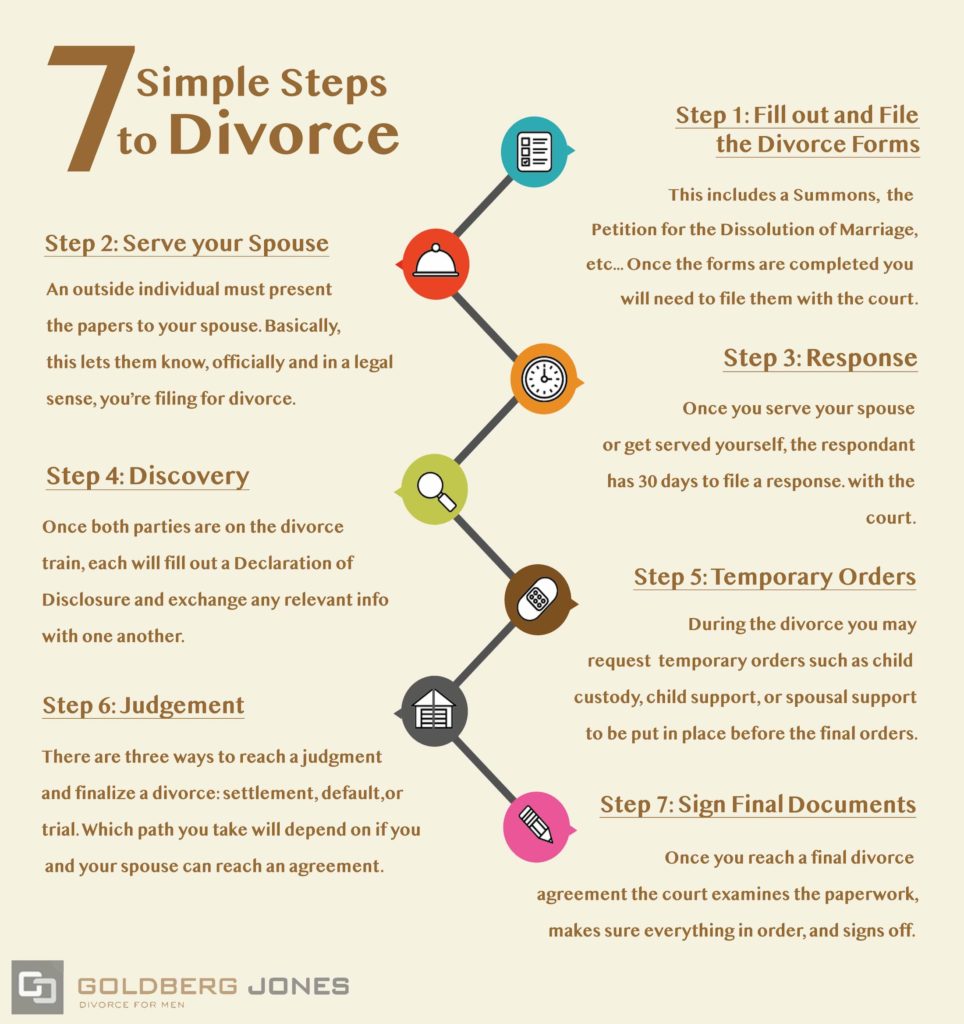If you’ve found yourself in a situation where you’re wondering, “How to Get a Divorce in California?” fear not, my friend. I’m here to guide you through the process and provide you with all the information you need to navigate this challenging time. Divorce can be a difficult and emotional experience, but understanding the steps involved can help make the process a little smoother. So, let’s dive in and explore the ins and outs of getting a divorce in the sunny state of California.
Now, before we get into the nitty-gritty details, it’s important to note that I’m not a lawyer, but I’ve done my fair share of research to bring you the most up-to-date and relevant information. Divorce laws can vary from state to state, so it’s crucial to familiarize yourself with the specific requirements and procedures in California. With that said, let’s get started on this journey of untangling the knots and finding a path to a new chapter in your life.
How to Get a Divorce in California?
Getting a divorce in California involves several steps. Here is a step-by-step guide on how to proceed:
- File Petition: Fill out the necessary forms and file a divorce petition with your local courthouse.
- Serve Spouse: Serve the divorce papers to your spouse, ensuring they receive them.
- Disclosure: Both parties must disclose their financial information.
- Negotiate Settlement: Work with your spouse to reach a settlement regarding child custody, property division, and support.
- Finalize Agreement: Once an agreement is reached, submit it to the court for approval.
- Court Approval: Attend a court hearing where a judge will review the agreement and grant the divorce.
- Obtain Divorce Decree: After the judge approves the divorce, obtain a divorce decree.

How to Get a Divorce in California?
Getting a divorce can be a challenging and emotional process, but understanding the steps involved can help make it a little easier. If you’re considering getting a divorce in California, it’s important to familiarize yourself with the specific requirements and procedures in the state. This article will guide you through the process of getting a divorce in California, from filing the necessary paperwork to reaching a settlement.
Filing for Divorce in California
To begin the divorce process in California, one spouse must file a petition for dissolution of marriage with the local Superior Court. This legal document outlines the grounds for divorce and any requested relief, such as child custody or spousal support. The petitioner (the spouse initiating the divorce) must serve the petition to the other spouse, known as the respondent, along with other required documents.
The respondent then has 30 days to file a response to the petition. This response may include any requested relief or counterclaims. It’s important to note that California is a no-fault divorce state, which means that neither spouse needs to prove wrongdoing or assign blame for the marriage breakdown. Irreconcilable differences are sufficient grounds for divorce in California.
Residency Requirements
Before filing for divorce in California, it’s crucial to meet the state’s residency requirements. Either you or your spouse must have lived in California for at least six months prior to filing, and you must also have lived in the county where you plan to file for at least three months. If you don’t meet these residency requirements, you’ll need to wait until you do before proceeding with the divorce.
Once the initial paperwork is filed and served, the next step is to complete the financial disclosures. Both spouses are required to disclose their assets, debts, income, and expenses. This information is essential for determining the division of property and any financial support arrangements. Failure to provide accurate and complete financial disclosures can have serious legal consequences.
Reaching a Settlement
After the initial paperwork and financial disclosures are complete, the next phase is settlement negotiations. The goal is to reach an agreement on all aspects of the divorce, including child custody and visitation, spousal support, division of assets and debts, and any other relevant issues. It’s important to note that the court encourages spouses to resolve their differences through negotiation rather than litigation.
If both spouses are able to reach a settlement, they can prepare a marital settlement agreement (MSA) that outlines the terms of the divorce. This document should be carefully drafted and reviewed by both parties and their respective attorneys to ensure that it accurately reflects their intentions and protects their rights. Once the MSA is signed, it can be submitted to the court for approval.
Mediation and Collaborative Divorce
In some cases, spouses may choose to engage in mediation or collaborative divorce to help facilitate the settlement process. Mediation involves working with a neutral third party, known as a mediator, who assists the spouses in reaching an agreement. Collaborative divorce involves each spouse having their own attorney and working together to find a mutually beneficial resolution.
Both mediation and collaborative divorce can be effective alternatives to traditional litigation, as they allow for more control over the outcome and can help preserve relationships. However, it’s important to consult with an attorney to determine if these methods are suitable for your specific situation.
Finalizing the Divorce
Once a settlement has been reached and approved by the court, the final step is to obtain a judgment of divorce. This is a legal document that officially ends the marriage. The judgment may include provisions for child custody and visitation, spousal support, and the division of assets and debts.
It’s important to note that the divorce process in California can take several months or even longer, depending on the complexity of the case and the court’s schedule. However, once the judgment is obtained, the divorce is considered final, and both parties can move forward with their lives.
In summary, getting a divorce in California involves filing the necessary paperwork, meeting residency requirements, completing financial disclosures, and reaching a settlement. It’s important to seek legal advice and support throughout the process to ensure that your rights are protected and that the divorce is finalized in a fair and equitable manner. Remember, every divorce is unique, so it’s essential to consult with an attorney who specializes in family law to guide you through the specific requirements and procedures in California.
Key Takeaways: How to Get a Divorce in California?
- Filing for divorce in California requires meeting residency requirements, which means you or your spouse must have lived in the state for at least six months before filing.
- You can choose between filing for a simplified or regular divorce. Simplified divorces are quicker and easier, but certain criteria must be met.
- Both parties need to complete and file the necessary divorce forms, including the Petition, Summons, and Declaration of Disclosure.
- California is a no-fault divorce state, meaning you don’t have to prove fault or blame to get a divorce. Irreconcilable differences are sufficient grounds for divorce.
- Once the paperwork is filed, you must serve your spouse with the divorce papers. This can be done by a process server or through certified mail.
Frequently Asked Questions
What are the residency requirements for getting a divorce in California?
In order to get a divorce in California, you or your spouse must meet the residency requirements. One of you must have lived in California for at least six months before filing for divorce. Additionally, you must have lived in the county where you plan to file for divorce for at least three months.
It’s important to note that if you don’t meet the residency requirements, you may still be able to file for a legal separation instead of a divorce. A legal separation allows you to divide your assets and establish custody and support arrangements, but you remain legally married.
What are the grounds for divorce in California?
California is a no-fault divorce state, which means that you don’t need to prove that your spouse did anything wrong in order to get a divorce. The most common ground for divorce in California is irreconcilable differences, which simply means that you and your spouse can no longer get along and your marriage cannot be saved.
It’s worth mentioning that if you do have specific grounds for divorce, such as adultery or domestic violence, these can still be considered in the division of property and determination of spousal support.
How do I start the divorce process in California?
To start the divorce process in California, you must first fill out the necessary forms, which can be obtained from your local courthouse or online. These forms include a Petition for Dissolution of Marriage, Summons, and various financial disclosure forms.
Once you have completed the forms, you must file them with the clerk’s office in the county where you or your spouse resides. You will need to pay a filing fee, unless you qualify for a fee waiver based on your income. After filing, you will need to serve the papers to your spouse, either through personal service or by mail with proof of delivery.
How long does it take to get a divorce in California?
The length of time it takes to get a divorce in California can vary depending on several factors, including the complexity of the case and the court’s caseload. In general, an uncontested divorce, where both parties agree on all issues, can be finalized in as little as six months.
However, if there are disagreements or disputes that need to be resolved, such as child custody or division of property, the process can take longer. It’s important to work with an attorney or mediator to help navigate these issues and reach a resolution as efficiently as possible.
Do I need an attorney to get a divorce in California?
While it is not required to have an attorney to get a divorce in California, it is highly recommended. Divorce can be a complex and emotionally challenging process, and having a knowledgeable attorney on your side can help ensure that your rights are protected and that you reach a fair settlement.
An attorney can guide you through the legal process, help you understand your rights and options, and advocate for your best interests. They can also assist with negotiations, drafting legal documents, and representing you in court if necessary.
How to Get a Divorce in California
Final Summary: How to Get a Divorce in California?
And there you have it, a comprehensive guide on how to get a divorce in California. It may seem like a daunting process, but with the right information and guidance, you can navigate through it smoothly. Remember to consult with a qualified attorney to ensure you understand the legal requirements and implications of your divorce.
Getting a divorce is never easy, but knowing the steps involved and having the necessary knowledge can help alleviate some of the stress. From filing the necessary paperwork to attending court hearings, each stage plays a crucial role in the overall process. Make sure to gather all the required documents and follow the specific procedures outlined by the state of California.
While this guide provides a general overview, it is important to seek professional advice tailored to your unique situation. Divorce laws can vary, and consulting with an attorney who specializes in family law will ensure that you receive accurate and personalized guidance. Remember to prioritize your well-being and the well-being of your family throughout this challenging time. Stay informed, stay strong, and navigate your divorce journey with confidence.
